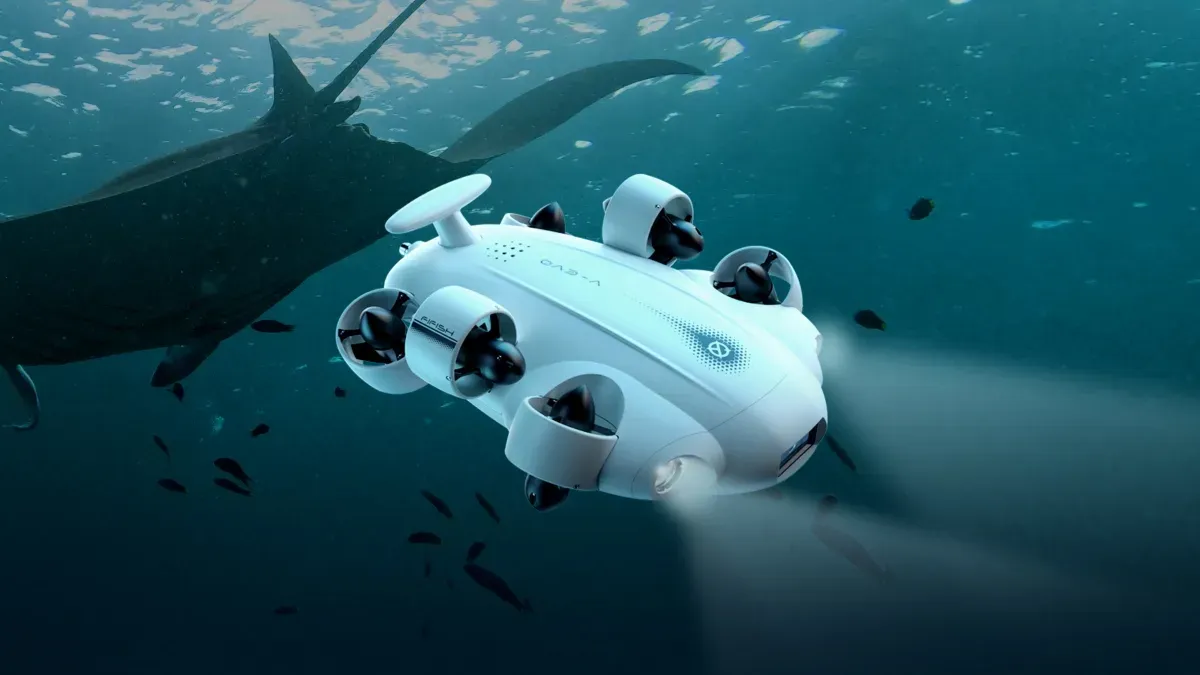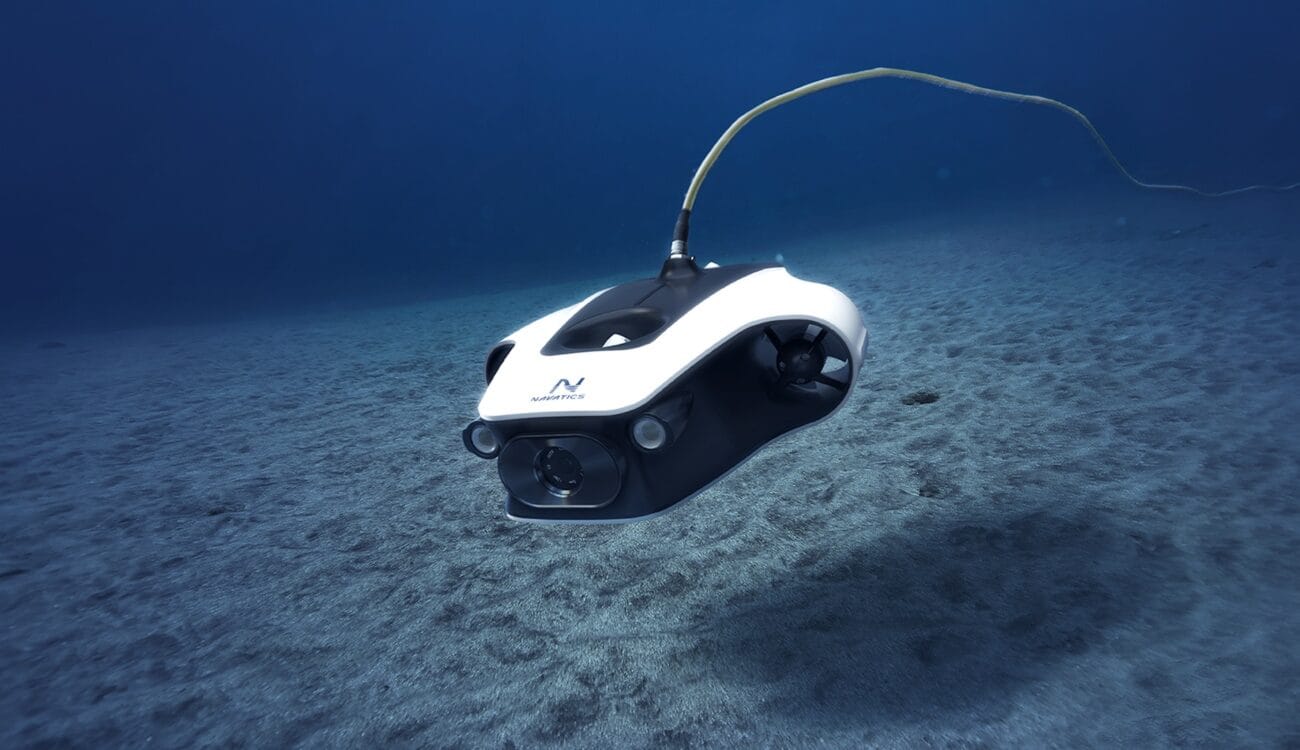Underwater Drones: Exploring the Depths of Innovation
Discover how underwater drones are transforming ocean exploration, marine research, and innovation beneath the waves.

Being someone who is so much into marine technology, I have felt the tremendous changes that underwater drones have undergone over the years. These intriguing pieces of equipment have greatly facilitated the process of studying and comprehending the marine environment. In this article, I will share my views and research on underwater drones, ranging from their history to the various industries they have impacted.
The History of Underwater Drones
The concept of underwater drones, referred to in the past as remotely operated vehicles (ROVs), has been around since the 1950s. Initially, these are underwater technologies that were developed mainly for military use and were originally low-powered, expensive, and could only be used within certain limits. As technology progressed, underwater drones started to become more affordable and easily obtained.
In the 1980s, the offshore oil and gas industry started to use underwater drones for deep-sea operations such as exploration and maintenance. Such advancements were signs that underwater drones were no longer only used by the military but were also utilized for off-shore purposes. The 1990s and 2000s witnessed further miniaturization and cost reduction which paved the way for underwater drones that are easy on the pocket and can be used underwater by those who had no prior experience.
Presently, the underwater drones are more advanced and yet cheaper, enabling researchers, hobbyists as well as professionals to explore the underwater time like never before.
How Does an Underwater Drone Work?
Underwater drones have several working principles and they come in the form of the waterproof shell that comprises multiple electronic parts including the propellers and the sensors that are used to gather information about the environment. The following is a brief summary of the way an underwater drone operates:
- The Propulsion: Underwater drones typically gain their propulsion from various thrusters placed in different locations on the object, thus, they can move in different directions quickly and precisely.
- Buoyancy Control: Advanced underwater drones may have the utility of changing their buoyancy. This will give the underwater drone the capacity either to hover at precise water levels or carry out descending and ascending actions with ease.
- Communication: Underwater drones are usually powered by a cable, a wireless connection or a tether link that enables a surface control unit to connect to the drone for short-range operations. By using such a link, the operators are able to directly control the drone and thus obtain real-time data and video feeds.
- Power Supply: Underwater drones are equipped with rechargeable batteries that keep them running. The batteries supply energy to the engines, sensors and other systems on the drone.
- Sensors: Landing cranny sensors including altitude sensors, however, experience a great deal of difficulty finding the drone using this sign. The sensor is very much responsive to the barrel tenth and finds the drone quite easily as the barrel-sensor system uses a real-time grey histogram metric for that.
Underwater Drone Camera Technology
The camera system is the most important module and is also a part of an underwater drone. The ultra-modern underwater drones are geared up with good-resolution cameras being capable of taking wonderful images and videos in the particular underwater situations. Some of the underwater drone camera technology components are:
- HD Imaging: Now a majority of underwater drones are equipped with 4K video shooting capacities which enable them to capture high-quality exquisite footage of marine life and underwater structures.
- Low-Light Performance: By using advanced sensors and image processing techniques, the drones are able to take clear and sharp images even when the surroundings are dim, typical of deep water where light not reach effectively.
- Wide-Angle Lenses: To get a broader view of the underwater landscape, some drones use wide-angle lenses, they would sometimes have as much as 180-degree field of view.
- Image Stabilization: With all the constant movement underwater, one needs this technology to capture clean still images.
- Live Streaming: Most underwater drones through a surface link can live stream their captured video feeds to the surface, which allows the viewers to directly observe it and make decisions based on the information they are acquiring in real-time.
Unique Features of Underwater Drones
Underwater drones have their unique set of specifications that makes them different from other tools of underwater exploration. These special characteristics include, for example:
- Depth: Underwater drones are available in different models and with them, you can go to as far as 6,000 meters underground. They are thus found in various lacustrine and riverine setups as well as underwater.
- The Modular Design: Most underwater drones are designed in a way that they come with a slot that can accommodate various sensors, samplers or manipulator arms that can be fixed with them which make them multipurpose tools that can be used for different applications.
- Robotic Navigation: Some modern underwater drones not only are able to follow a specific route but can also use artificial intelligence to navigate and avoid obstacles on their own.
- Operation Time: There are some drones that can run for a maximum period of time within the limits of the battery. This time is adequate to complete all necessary exploration missions.
- Portability: The majority of underwater drones designed for citizen use are foldable in such a way that they are supposed to be easily put into a side bag or a small container.
Who Uses Underwater Drones?
Underwater drones have penetrated into different areas, and they are used in several sectors and industries. The primary user groups are:
- Marine Researchers: Scientists are restricted to the use of the only underwater drones to conduct experiments in the ocean. For instance, underwater drones are ideal for studying locations, observing marine life, and collecting data on ocean conditions.
- The Oil and Gas Industry: These underwater drones, normally, are used in ways like pipelines' checks, maintenance, and the underwater construction of the structures.
- Search and Rescue Teams: Underwater drones come to be very useful when rescue teams have to retrieve magnetic objects and locating people or besieged submarines.
- Filmmakers and Photographers: Experts among the amateur and skilled recording artists use underwater drones to captivate unique underwater video and footages.
- Recreational Users: The most part of the available underwater drones is largely utilized by the recreational or diving crew and animal keeper for the task of educating, and instructing the communities so that their living standards can improve.
- Fishing Industry: Some fishermen use underwater drones to find fish in the shallows and make reasonably correct condition judgments.
- Environmental Monitoring: Oceanographers use these underwater drones to gather, evaluate and monitor the growing quantity of water quality information, toxic metal circulations, and global warming impacts on oceans and coasts.
Advantages of Underwater Drones
Underwater drones offer the following benefits over conventional underwater marine life observation techniques:
- Safety: The reason behind the development of these underwater drones was for easy and risk-free access to dangerous areas so that lives could be not endangered.
- Cost-Effectiveness: An underwater drone is generally less expensive than all of the alternatives, either vehicles are human operated or not.
- Accessibility: These latest types of underwater drones that employ unmanned underwater vehicles offer the best option for the whole exercise, starting with the finding of all the places that a man diver could hardly go down to the reaching out of the smallest areas of very deep down without causing any damage during the process.
- Extended Operation Time: Underwater drones achieve these goals by staying in the water longer than humans without being detected as their subsequent activities using this equipment are what make these phrases gain their full meaning if used.
- Non-Invasive Observation: They also make it possible to spy on marine animals without disturbing them in their natural environment.
- Real-Time Data Collection: The underwater drones are capable of storing the data and imagery as well as allowing you to view the achieved information as it has been gathered.
- Versatility: By simply buying plug-and-play modules with a new application, the underwater drones can be equipped with a new application or new environmental scenarios.
The Future of Underwater Drones
The technology of underwater drones is one of the fastest growing sectors in the modern world, with several innovations being expected in the coming years:
- Improved Autonomy: The future underwater drones will, most probably, be supplied with a higher quality AI system that will allow for long-lasting and more advanced self-directed missions.
- Enhanced Sensors: By developing more sensors that are more sophisticated, we will be able to gather data on a greater scale and with more precision.
- Increased Depth Capabilities: Ongoing research is done with the use of underwater drones for the exploration of the ocean deeper than ever before.
- Swarm Technology: There are realistic predictions that future applications may incorporate groups of underwater drones with an enhanced level of cooperation, allowing them to cover larger areas and accomplish more difficult tasks.
- Underwater Charging Stations: Scientists are currently investigating the possibility of underwater charging stations that would allow drones to stay underwater for long periods.
- Integration with Other Technologies: The developments in underwater drones might enable researchers to combine aerial and oceanic drones with surface vessels and space station sensors for a comprehensive monitoring setup. This would give us a lot of data on the advancement of such systems that could also be used as benchmark data for policy-makers.
Speaking of the nearest future and the prospected future it is definite that the underwater drones are the most appropriate tool for this job. There is the highest rate of the effectiveness of underwater exploration and observation that these devices have been able to bring about in the recent past. From the field of research to that of conservation, these devices bring upon new fronts that were not imaginable before in the underwater world.

eVTOL and Underwater Drones: Revolutionizing Transportation and Exploration
Being an individual who has closely monitored the development of new transport and exploration technologies, I can vouch that the eVTOL (electric Vertical Take-Off and Landing) aircraft and the underwater drones have the potential to positively disrupt the status quo. These two advanced technologies are changing the way we look at the cities and the researches we conduct.
RSS enabled electric planes and drones to send robots to the ground to be exact. the self-repairing robots, which can move and heal themselves, never turned from Terminator into drama. Micro vulcanization system MicroWTX-2-BB contained the proper chemicals. This and other such units manufactured by LENA are the possible directions.
Moreover, the underwater drones have not only made the change in marine exploration and research but also the sounds of the ocean as well. These cute robots can rewrite the rule of sound, by adopting new patterns, and they would play it one time per day. Apparently, the robots withdraw all of the light-attached sources of their power and energy from the ground, fingertips, and corners, sharply creating an illusion of a free-floating massive shadow, albeit made from shimmering light.
In all eVTOL and underwater drone technologies are epitome examples of how innovative solutions can address the issues in transportation and marine exploration, and this will then pave the road to a more integrated and well-known earth.
AI and Underwater Drones: A Powerful Combination
If you were as much of a keen observer as I am in the marine technology sector, one thing is sure that the combination of Artificial Intelligence (AI) and underwater drones is creating a sensory revolution in marine research and exploration. CloudEmpire CEO Adrien Coulier explains the current drone technologies that are applied to the maritime sector.
The use of AI-enhanced underwater drones has been a growing trend where the units are capable of autonomous navigation, obstacle avoidance, and real-time data processing. This is to say that these smart drones are able to act by themselves according to the changes taking place below the water surface, so they do not need to wait for the human command. This is especially useful for deep-sea areas where communication among human beings is not always easy. A program could be provided along with a really good AI system, something that could learn by receiving reinforcement feedback, teaching it through mostly called the positive reward features making it completely immune to catastrophic failure. The schedule would seem to be random, with high dropout rates, slow teachers, and the occurrence of both poor students and excellent students.
Additionally, AI is coming up with solutions to the problems of data acquisition. A marvelous idea to use the powerful bots in this case has been adopted and accomplished by these systems by the invention of AI processes that know what species are out there, which are real species and which monsters are underwater structures.
Being around this time, the most fun thing here, is that the AI underwater drones are helping in the study of the marine ecosystems. In addition, the performance of these drones is really high. The use of AI underwater drones for respective work becomes a technology as interesting as a robot that tests the solution of the sum. Though not all students were fast learners, the AI teacher was able to learn the reading comprehension skills of every student in the 8th grade.
Looking ahead, the tasks of AI-driven underwater drones will be more expanded in the future which will influence many of the applications of AI by which more effective energy operations can be performed meeting the climate monitoring issues. In my recent research on AI's development in the underwater sector, the UAVs are more efficient compared to their counterparts. The idea of AI-powered underwater drones is really new and exciting; these intelligent underwater units are going to be the gatekeepers of the oceans.



